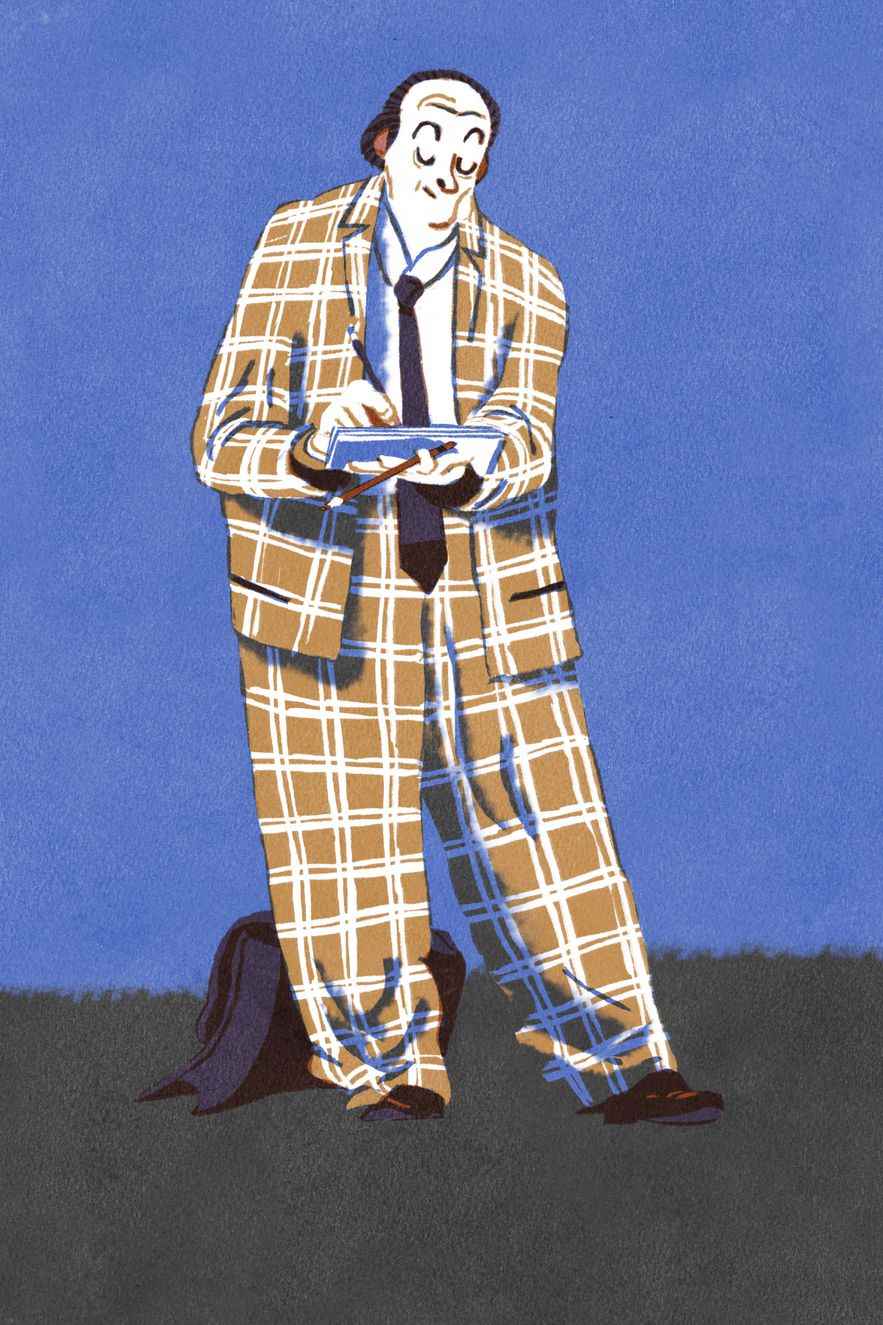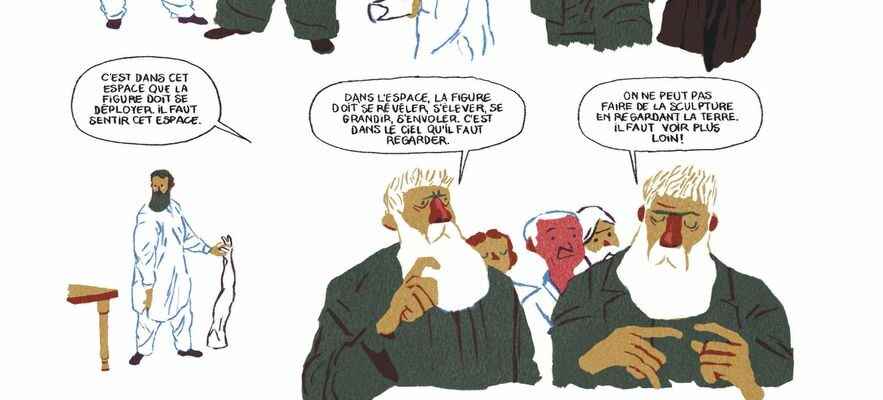Constantin Brancusi, his sanctuary studio, his avant-garde practice… and his incredible run-ins with the law. History, known, remains in the collective memory “the trial of modern art”. It all started in the fall of 1926, when the artist shipped sculptures to the Brummer Gallery in New York for a monographic exhibition.
It was his friend Marcel Duchamp who made the trip. But as soon as the pieces arrive on US soil, a zealous customs officer judges them incompatible with works of art and decides not to exempt them from the tax applicable to manufactured objects. Through the faithful Duchamp, the sculptor appealed and thus opened a year later the trial Brancusi vs United States. While Brancusi is explaining himself at the American consulate in Paris, a host of experts, guardians of academicism or fervent modernists, parade at the bar facing the New York magistrate summoned to form an opinion.
It is to this legal incident that the illustrator and youth author Arnaud Nebbache, originally from Rouen, devotes his first comic strip released these days at Dargaud. The book first scans Brancusi’s beginnings in the lair of the authoritarian Rodin, whom the son of Romanian peasants does not take long to leave: he is tired of chaining casts in the service of the “old oak” . Twenty years later, Constantin, who has taken the bottle, tirelessly seeks to translate “the essence of flight” as he shapes a bird that will become “Exhibit No. 1” in the trial to come. . bird in space, tapered polished bronze with a height of 1.35 meters, is it an authentic work of art? Or a utilitarian object (perplexed, the suspicious customs officer classified it in the “kitchen instrument” category)? Is Brancusi an artist or a craftsman? Such is the question, which lugs around its share of complex interrogations around the borders of art, the subjectivity of beauty and the free circulation of works.
Arnaud Nebbache, “Brancusi against the United States” (p.10), 2023.
/ © Arnaud Nebbache © Editions Dargaud
“A digital technique to guide each sequence of the story”
Arnaud Nebbache, who discovered the case during his art studies at the Saint-Luc Institute in Brussels, dreamed of restoring it to the boards. He uses here “a digital technique that can be similar to stencil and screen printing by the four solid colors chosen to guide each sequence of the story”, he explains to L’Express. The scenes in court offer a specific chromatic and graphic palette where the bubbles arise like snapshots taken on the spot. “To make the trial less cold, I took the liberty of bringing it to life through the eyes and the hand of Marcel Duchamp; we know that he played an essential role as mediator but there is nothing to indicate that he assisted to the entirety of the debates or made sketches of them”, specifies the designer.

Arnaud Nebbache, “Brancusi against the United States (Marcel Duchamp)”
/ © Arnaud Nebbache
At the crossroads of fiction and didactic content, Brancusi against the United States sees the emergence of a few deliciously sketched supporting roles, including Rodin and Duchamp, of course, but also Fernand Léger, Erik Satie, Alexandre Calder or even the former dancer Marthe Lebherz (Tonton) with whom the sculptor (Tantan) was in love.
A coup de force, the album does not avoid any issues related to the dispute, from the quest for a demanding artist plagued by doubt to the sometimes surreal exchanges between the supporters of the past and those of the revolution in progress. We know the happy ending: the most abstract of figurative sculptors won his case against America and, incidentally, that of modern art, of which he was one of the major pioneers.
